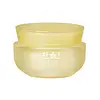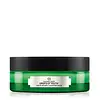What's inside
What's inside
 Key Ingredients
Key Ingredients

 Benefits
Benefits

 Concerns
Concerns

 Ingredients Side-by-side
Ingredients Side-by-side

Water
Skin ConditioningGlycerin
HumectantButylene Glycol
HumectantMethyl Trimethicone
Skin ConditioningHydrogenated Poly(C6-14 Olefin)
EmollientTrehalose
HumectantNiacinamide
SmoothingAlcohol
AntimicrobialPCA Dimethicone
Skin Conditioning1,2-Hexanediol
Skin ConditioningBehenyl Alcohol
EmollientJojoba Esters
EmollientAcrylates/C10-30 Alkyl Acrylate Crosspolymer
Emulsion StabilisingCnidium Officinale Root Water
MaskingAngelica Acutiloba Root Water
Skin ConditioningHydroxyethyl Acrylate/Sodium Acryloyldimethyl Taurate Copolymer
Emulsion StabilisingHelianthus Annuus Seed Oil
EmollientLimonene
PerfumingAmmonium Acryloyldimethyltaurate/Beheneth-25 Methacrylate Crosspolymer
Emulsion StabilisingTromethamine
BufferingCitrus Junos Peel Oil
AstringentXanthan Gum
EmulsifyingGlyceryl Caprylate
EmollientDaucus Carota Sativa Root Extract
Skin ConditioningDisodium EDTA
Ethylhexylglycerin
Skin ConditioningGeraniol
PerfumingAdenosine
Skin ConditioningSorbitan Isostearate
EmulsifyingLinalool
Perfuming3-O-Ethyl Ascorbic Acid
Skin ConditioningBeta-Carotene
Skin ConditioningFarnesol
PerfumingTocopherol
AntioxidantCymbopogon Martini Oil
MaskingCitrus Junos Peel Extract
Skin ConditioningWater, Glycerin, Butylene Glycol, Methyl Trimethicone, Hydrogenated Poly(C6-14 Olefin), Trehalose, Niacinamide, Alcohol, PCA Dimethicone, 1,2-Hexanediol, Behenyl Alcohol, Jojoba Esters, Acrylates/C10-30 Alkyl Acrylate Crosspolymer, Cnidium Officinale Root Water, Angelica Acutiloba Root Water, Hydroxyethyl Acrylate/Sodium Acryloyldimethyl Taurate Copolymer, Helianthus Annuus Seed Oil, Limonene, Ammonium Acryloyldimethyltaurate/Beheneth-25 Methacrylate Crosspolymer, Tromethamine, Citrus Junos Peel Oil, Xanthan Gum, Glyceryl Caprylate, Daucus Carota Sativa Root Extract, Disodium EDTA, Ethylhexylglycerin, Geraniol, Adenosine, Sorbitan Isostearate, Linalool, 3-O-Ethyl Ascorbic Acid, Beta-Carotene, Farnesol, Tocopherol, Cymbopogon Martini Oil, Citrus Junos Peel Extract
Water
Skin ConditioningPropanediol
SolventGlycerin
HumectantDimethicone
EmollientHelianthus Annuus Hybrid Oil
EmollientPolysorbate 20
EmulsifyingDiheptyl Succinate
EmollientAcrylates/Beheneth-25 Methacrylate Copolymer
Phenoxyethanol
PreservativeTocopheryl Acetate
AntioxidantOrbignya Oleifera Seed Oil
EmollientBenzyl Alcohol
PerfumingCaprylhydroxamic Acid
Sodium Hyaluronate
HumectantSodium Hydroxide
BufferingParfum
MaskingDisodium EDTA
Adenosine
Skin ConditioningCaffeine
Skin ConditioningCapryloyl Glycerin/Sebacic Acid Copolymer
Skin ConditioningLinalool
PerfumingCitronellol
PerfumingLeontopodium Alpinum Meristem Cell Culture
Skin ConditioningLimonene
PerfumingCitric Acid
BufferingXanthan Gum
EmulsifyingWater, Propanediol, Glycerin, Dimethicone, Helianthus Annuus Hybrid Oil, Polysorbate 20, Diheptyl Succinate, Acrylates/Beheneth-25 Methacrylate Copolymer, Phenoxyethanol, Tocopheryl Acetate, Orbignya Oleifera Seed Oil, Benzyl Alcohol, Caprylhydroxamic Acid, Sodium Hyaluronate, Sodium Hydroxide, Parfum, Disodium EDTA, Adenosine, Caffeine, Capryloyl Glycerin/Sebacic Acid Copolymer, Linalool, Citronellol, Leontopodium Alpinum Meristem Cell Culture, Limonene, Citric Acid, Xanthan Gum
 Reviews
Reviews

Ingredients Explained
These ingredients are found in both products.
Ingredients higher up in an ingredient list are typically present in a larger amount.
Adenosine is in every living organism. It is one of four components in nucleic acids that helps store our DNA.
Adenosine has many benefits when used. These benefits include hydrating the skin, smoothing skin, and reducing wrinkles. Once applied, adenosine increases collagen production. It also helps with improving firmness and tissue repair.
Studies have found adenosine may also help with wound healing.
In skincare products, Adenosine is usually derived from yeast.
Learn more about AdenosineDisodium EDTA plays a role in making products more stable by aiding other preservatives.
It is a chelating agent, meaning it neutralizes metal ions that may be found in a product.
Disodium EDTA is a salt of edetic acid and is found to be safe in cosmetic ingredients.
Learn more about Disodium EDTAGlycerin is already naturally found in your skin. It helps moisturize and protect your skin.
A study from 2016 found glycerin to be more effective as a humectant than AHAs and hyaluronic acid.
As a humectant, it helps the skin stay hydrated by pulling moisture to your skin. The low molecular weight of glycerin allows it to pull moisture into the deeper layers of your skin.
Hydrated skin improves your skin barrier; Your skin barrier helps protect against irritants and bacteria.
Glycerin has also been found to have antimicrobial and antiviral properties. Due to these properties, glycerin is often used in wound and burn treatments.
In cosmetics, glycerin is usually derived from plants such as soybean or palm. However, it can also be sourced from animals, such as tallow or animal fat.
This ingredient is organic, colorless, odorless, and non-toxic.
Glycerin is the name for this ingredient in American English. British English uses Glycerol/Glycerine.
Learn more about GlycerinLimonene is a fragrance that adds scent and taste to a formulation.
It's found in the peel oil of citrus fruits and other plants such as lavender and eucalyptus. The scent of limonene is generally described as "sweet citrus".
Limonene acts as an antioxidant, meaning it helps neutralize free radicals.
When exposed to air, oxidized limonene may sensitize the skin. Because of this, limonene is often avoided by people with sensitive skin.
The term 'fragrance' is not regulated in many countries. In many cases, it is up to the brand to define this term. For instance, many brands choose to label themselves as "fragrance-free" because they are not using synthetic fragrances. However, their products may still contain ingredients such as essential oils that are considered a fragrance.
Learn more about LimoneneLinalool is a fragrance and helps add scent to products. It's derived from common plants such as cinnamon, mint, citrus, and lavender.
Like Limonene, this ingredient oxidizes when exposed to air. Oxidized linalool can cause allergies and skin sensitivity.
This ingredient has a scent that is floral, spicy tropical, and citrus-like.
Learn more about LinaloolWater. It's the most common cosmetic ingredient of all. You'll usually see it at the top of ingredient lists, meaning that it makes up the largest part of the product.
So why is it so popular? Water most often acts as a solvent - this means that it helps dissolve other ingredients into the formulation.
You'll also recognize water as that liquid we all need to stay alive. If you see this, drink a glass of water. Stay hydrated!
Learn more about WaterXanthan gum is used as a stabilizer and thickener within cosmetic products. It helps give products a sticky, thick feeling - preventing them from being too runny.
On the technical side of things, xanthan gum is a polysaccharide - a combination consisting of multiple sugar molecules bonded together.
Xanthan gum is a pretty common and great ingredient. It is a natural, non-toxic, non-irritating ingredient that is also commonly used in food products.
Learn more about Xanthan Gum